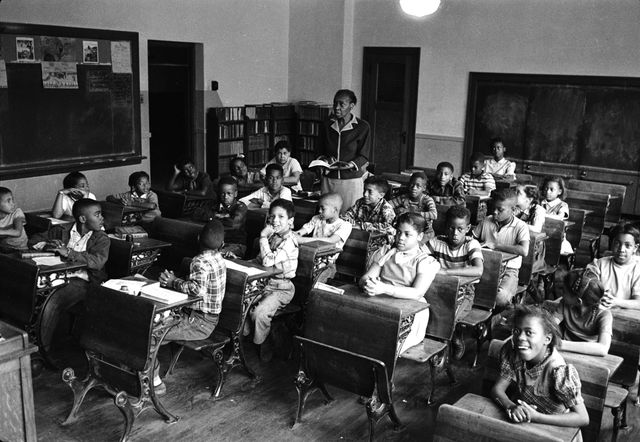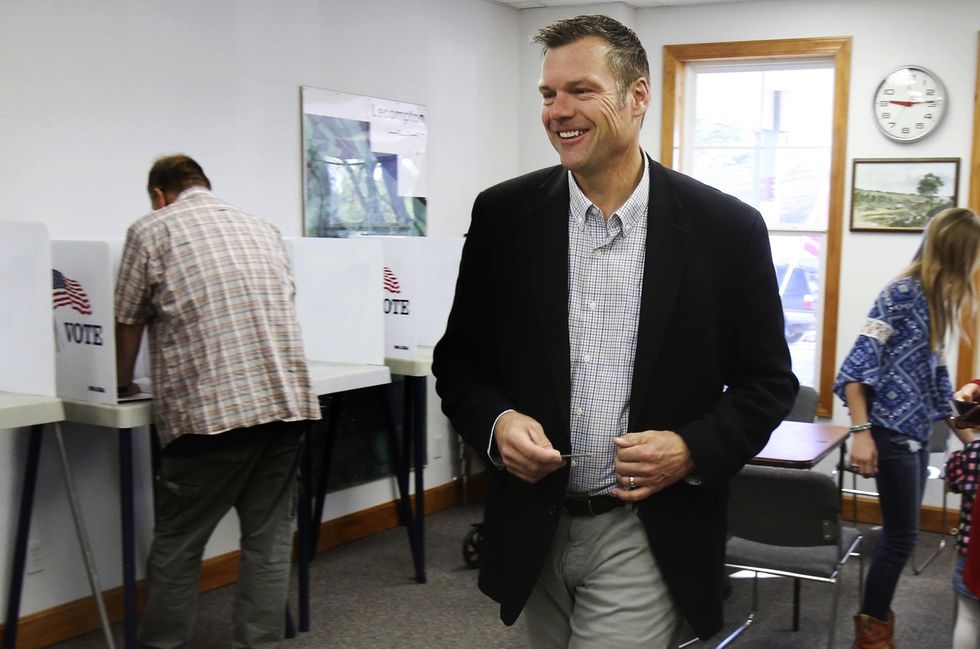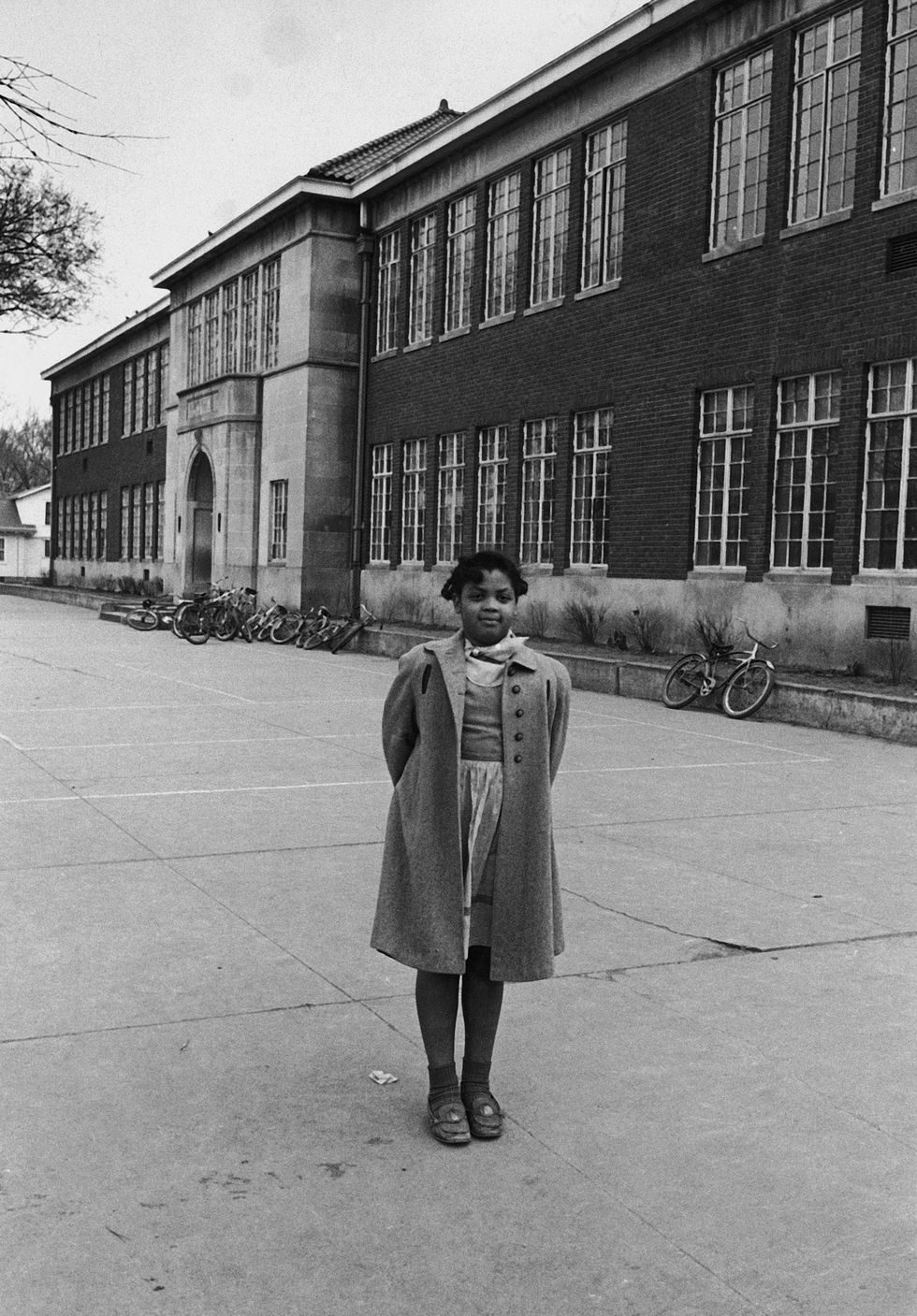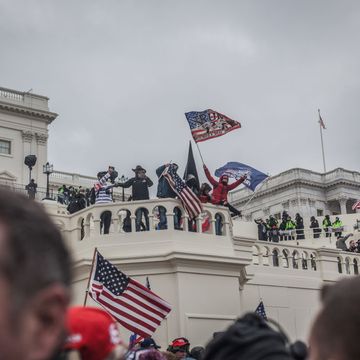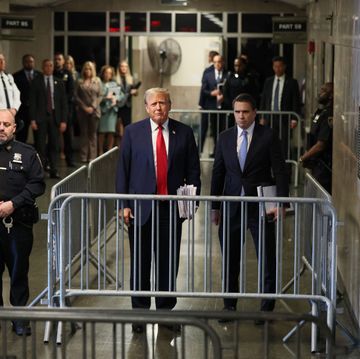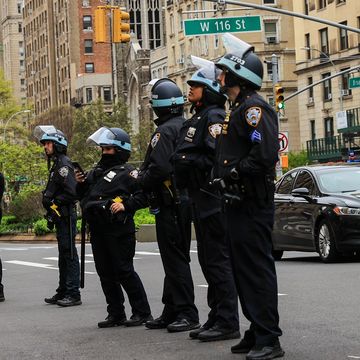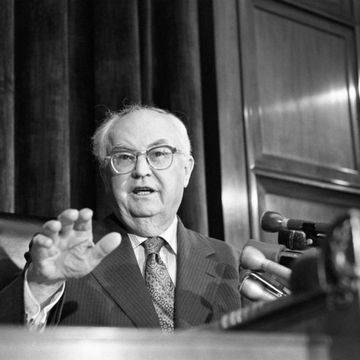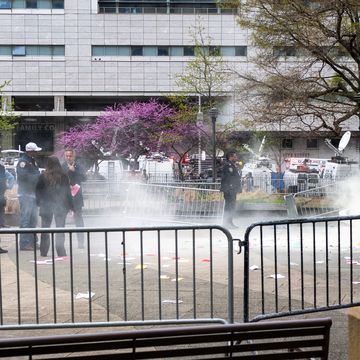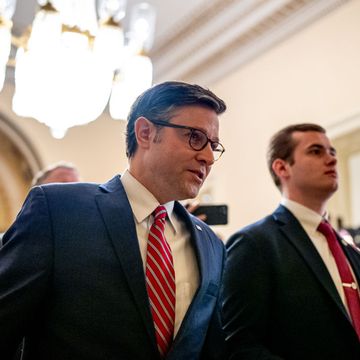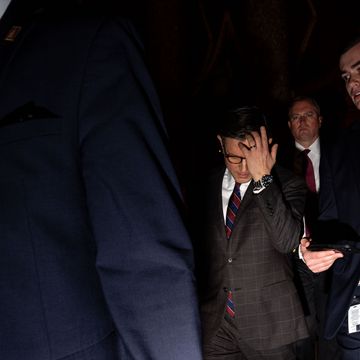TOPEKA, KS — The afternoon was running toward rain and things had slowed down in the polling place at 1515 S.E. Monroe Street, tucked in there behind the side door to the well-preserved old schoolhouse. Dick and Francine, two poll workers, were talking about all the people who'd been through during the morning hours, and about how great they felt working at this particular polling place on this particular day. "When you think of what began here," Dick said, "you feel like there's something special to coming here to vote."
Years ago, this was the Monroe School, centerpiece of the Monroe Avenue Neighborhood, the heart of Topeka's African-American community. In the years after the Civil War, an ex-slave named Benjamin "Pap" Singleton went back to his birthplace in Tennessee and, with a partner named Columbus Johnson, put together a program by which newly freed slaves would come with him to Kansas and settle there, beyond the reach of the new "black codes" and the terrorism of the Klan, both of which were strengthening in the states of the old Confederate States of America. Between 1877 and 1879, some 50,000 of what became known as Exodusters followed Singleton and Johnson west.
One of them, John Solomon Lewis, wrote home in 1879, telling his people there what he had found out on the flatlands. A sharecropper in Tennessee, Lewis fled with his family and hid in the forest until the boat came to take him to Kansas.
Well we took [to] the woods, my wife and four children, and we was three weeks living in the woods waiting for a boat. Then a great many more black people came and we was all together at the landing. Boats came along, but they would not stop, but before long the Grand Tower hove up and we got on board. Says the captain, ‘Where’s you going?’ Says I, ‘Kansas.’ Says he, ‘You can’t go on this boat.’ Says I, ‘I do; you know who I am. I am a man who was a United States soldier and I know my rights, and if I and my family gets put off, I will go in the United States Court and sue for damages.’ Says the Captain to another boat officer, ‘Better take that n****r or he will make trouble.’
So many refugees from the South settled in Topeka that an entire part of there city came to be known as Tennessee Town. One of the most prominent citizens in Tennessee Town was an attorney named Elisha Scott. He had two sons, John and Charles. They became attorneys, too. In 1954, right there from the middle of what Pap and Columbus had wrought, the heirs to the Exodusters changed history. Right there. At this school.
The Monroe Avenue Elementary School stood on land donated to poor white citizens and escaped slaves by an abolitionist couple named the Ritchies, and, hence, the area became known as Ritchie's Addition. They built a school for black children, which gradually expanded. By 1950, Topeka, which had availed itself of a state law allowing cities and towns to segregate their elementary schools by local option, was operating four elementary schools for black children. One of them was Monroe Avenue. It was a clean and well-kept place, but there were problems with it that did not occur at the white schools across town. It was overcrowded; students had to attend in shift. There was no cafeteria, so students either went hungry or, if they were lucky enough, they'd go across the street to Miss Laura's Coffee Shop and grab a sandwich.
One of the students was Linda Brown. She had to cross two sets of railroad tracks and take a bus to get to school every day, despite the fact that there was perfectly fine—if all white—elementary school four blocks from her house. Linda's father, Oliver Brown, a welder and part-time preacher, got in touch with the local chapter of the NAACP, which connected him with two of its lawyers, John and Charles Scott. Linda Brown was about to become immortal.
Republican gubernatorial candidate Kris Kobach rolled into one of his headquarters in a dying mall just outside downtown Wichita on Monday afternoon. This was one of the easiest gigs for a candidate. You go in, glad-hand the volunteers, deliver your talking points with a smile, and then sit down and make a couple of canvassing phone calls, surprising the person on the other end of the line with the honor of actually talking to the candidate.
Kobach looked like he had fisher cats attached to both of his ankles and a wolverine going for his groin. He did not look like a man enthusiastic about the job of running for office. He was talking like a burdened and embattled underdog. He was talking about being outspent, and about some vague "historical trend" that he found hard to explain. A Republican, talking like that, in Kansas.
"We're fighting an uphill battle," he said."She (Democratic candidate Laura Kelly) has a lot of money, most of it from out of state, for the last couple of weeks. We're fighting a historical pattern, bucking a trend, tomorrow."
Kobach, of course, is running as the heir to a political legacy that this state already has rejected. His main argument against Kelly is based on the taxes that passed the Kansas legislature as an attempt to rehabilitate the state's economy from the damage done to it by departed Governor Sam Brownback's anti-tax fanaticism that virtually ruined the political commons in the state.
"Everything was damaged," Kelly had explained on Sunday night. "Education. The environment. The corrections system, all of it was broken." She continually hammers Kobach on the stump as a return to what has become known around the state as the failed Brownback experiment. "The thought of Kris Kobach as governor is frightening."
In addition, Kobach is the national face of both harsh anti-immigration measures and voter-suppression based on the fantastical notion of widespread national voter fraud. So he is carrying that burden, too. He looked exhausted and uninspired. It must be wearying to be standing for your entire career blocking the power of that much history, especially since that history picked up its first real momentum only a few blocks west of your office in Topeka.
Eventually, of course, Linda Brown's case wound its way to the United States Supreme Court as Brown v. Board of Education. On May 17, 1954, the Supreme Court unanimously ruled in favor of Linda Brown and her fellow plaintiffs, destroying the white-supremacist legal infrastructure established by Plessy v. Ferguson in 1896. Separate, the Court said, was not equal, and the 14th Amendment meant what it said when it talked about equality under the law.
Writing for the Court, Chief Justice Earl Warren, said:
Segregation of white and colored children in public schools has a detrimental effect upon the colored children. The effect is greater when it has the sanction of the law, for the policy of separating the races is usually interpreted as denoting the inferiority of the negro group. A sense of inferiority affects the motivation of a child to learn. Segregation with the sanction of law, therefore, has a tendency to [retard] the educational and mental development of negro children and to deprive them of some of the benefits they would receive in a racial[ly] integrated school system.
Linda Brown died last March. She was 75 years old. She lived to see all the glory that had come to the country after she and her fellow plaintiffs had won their fight. She saw the entire Civil Rights Movement and she lived to see the backlash, too. She lived to see Kris Kobach get famous sabotaging the hard-won victories, of which hers was one of the first. She lived to see the country elect an out-and-out bigot to be President of the United States. She did not live long enough to vote against all of that on Tuesday.
But, as the afternoon rain began to patter harder through the leaves and onto the bricks of the Monroe Avenue School, now the Brown v. Board of Education National Historical Landmark, and as voters came in, one or two at a time, the words of John Solomon Lewis, the Exoduster who escaped from Tennessee, rung with a deep, inescapable resonance.
When I landed on the soil, I looked on the ground and I says this is free ground. Then I looked on the heavens, and I says them is free and beautiful heavens. Then I looked within my heart, and I says to myself I wonder why I never was free before? When I knew I had all my family in a free land, I said let us hold a little prayer meeting; so we held a little meeting on the river bank. It was raining but the drops fell from heaven on a free family, and the meeting was just as good as sunshine. We was thankful to God for ourselves and we prayed for those who could not come. I asked my wife did she know the ground she stands on. She said, ‘No!’ I said it is free ground; and she cried like a child for joy.
For more of Charlie's signature analysis and commentary, sign up for Last Call with Charles P. Pierce, a new weekly newsletter.
Respond to this post on the Esquire Politics Facebook page here.

Charles P Pierce is the author of four books, most recently Idiot America, and has been a working journalist since 1976. He lives near Boston and has three children.
